Get Ready for Red-Winged Blackbird Season
Updated: Nov. 02, 2023
Get facts about the red-winged blackbird, a black bird with red and yellow wings that returns to backyards in spring. Learn about their call, eggs and more.
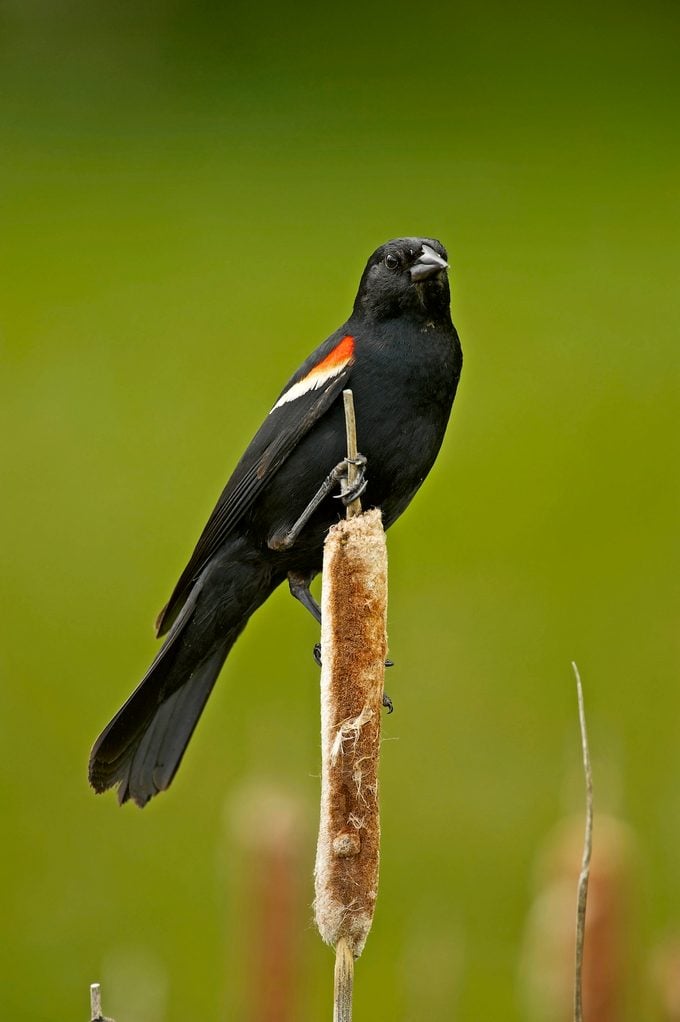
Carolus Linneaus, a Swedish scientist, gave the red-winged blackbird its scientific name, Agelaius phoenicus, in 1766. The name comes from the Greek words for flocking and red. Here’s everything you need to know about a red-winged blackbird.
Meet 5 types of blackbirds you should know.
Red Winged Blackbird Call
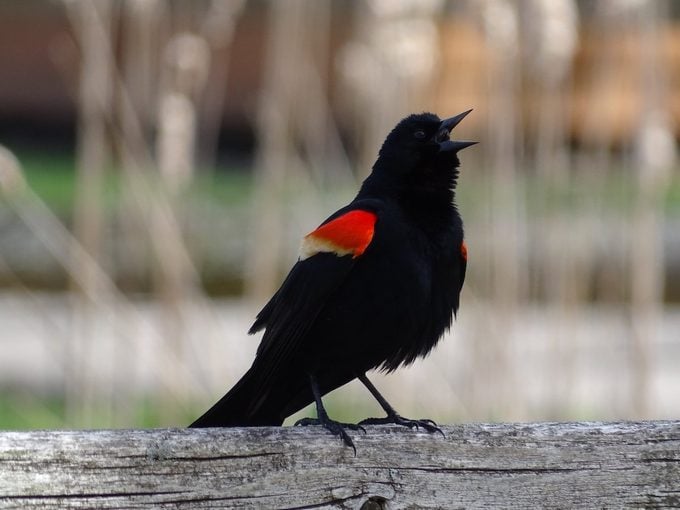
Red-winged blackbirds are one of the most widespread birds in North America. This is evident come early spring, when the glossy black males claim territory near water, issuing loud calls to chase away rivals and intruders, including the occasional human. To defend their home base, they extend their wings to highlight their red-and-yellow shoulder markings.
Red-winged blackbird calls are harsh and noisy. Males claim territory with a full-throated conk-la-ree. Sarah Winnicki, a Ph.D. candidate at the University of Illinois Urbana-Champaign, says the sound reminds them of a “wetland on an early spring morning.”
What does a mourning dove call sound like?
What Does a Male Red-Winged Blackbird Look Like?
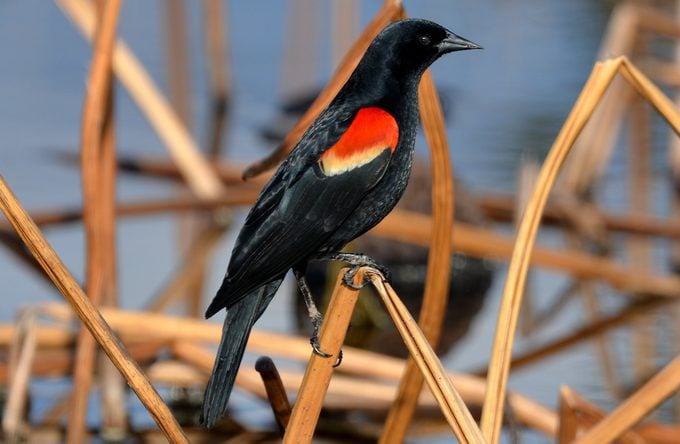
Males are almost all black with bright red and yellow wing epaulets. Throughout their large range, males vary in their trademark colorful wing feathers. The birds that breed in California and Mexico lack the yellow stripe that many other males have.
Forget mating for life. Males of this species can’t commit. Top males may mate with up to 15 females. “Males that are really healthy and competitive can control more resources than lower-quality males, which likely means they can get both more food and more mates,” says Sarah.
Check out 8 yellow and black birds you should look for.
What Does a Female Red-Winged Blackbird Look Like?
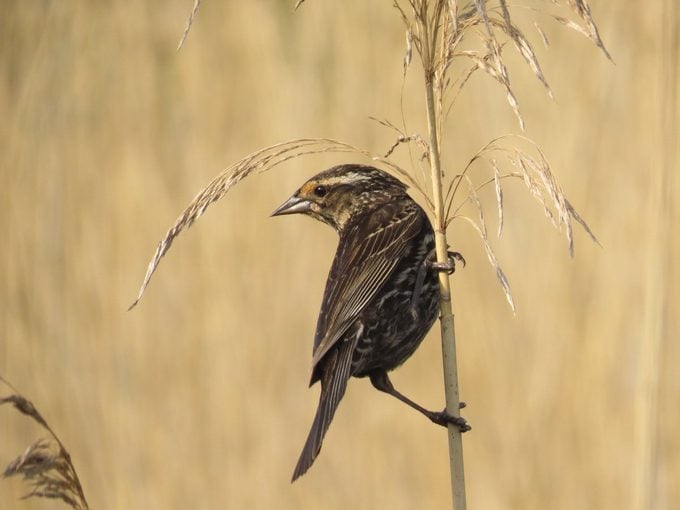
The smaller, streaky brown females issue their own scolding calls—though mostly toward other females. You might not realize they’re the same species as the black and red males.
Find out what a female cowbird looks like.
Nest and Eggs
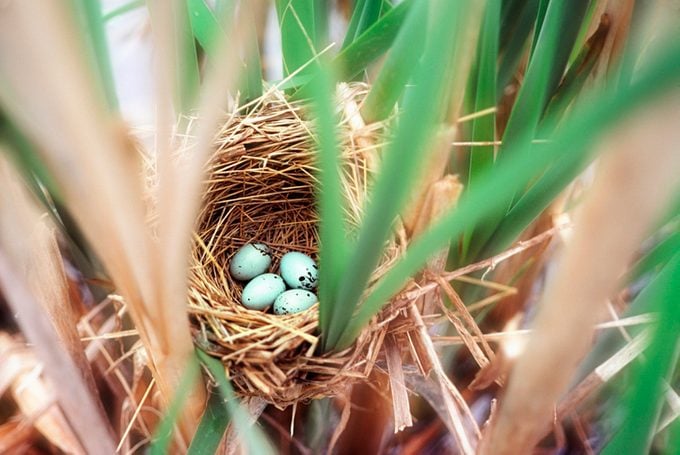
Close to the surface of the marsh, females build deep cup-shaped nests lined with dry grasses. Nests usually hold three to four pale blue-green eggs accented with dark markings. A female produces one or two broods per year.
Learn how to identify bird eggs by color and size.
Juvenile Red-Winged Blackbirds
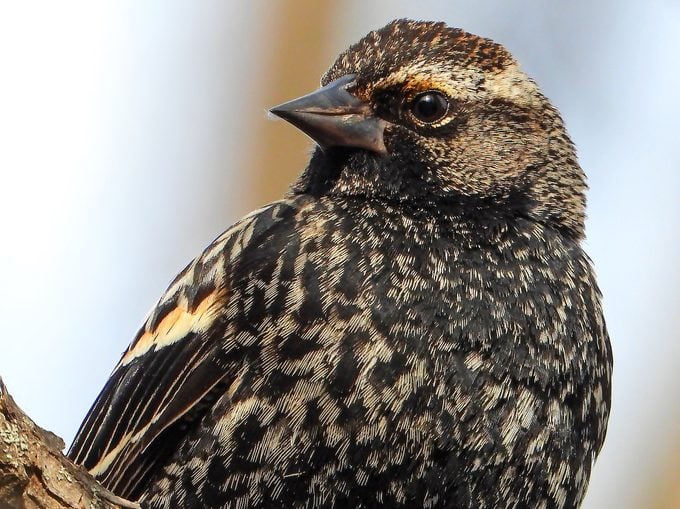
In less than two weeks, hatchlings emerge. They won’t fledge for another two weeks, but by day six or so, they have enough feathers to keep warm. The young also have the strength in their wings and feet to swim, should they fall out of the nest and into water. “Researchers have observed baby blackbirds swimming until they can get to a nearby cattail or structure and clamber out of the water,” says Sarah.
Juveniles have streaked dark brown plumage and often hop along the ground searching for food with their parents.
A juvenile red-winged blackbird can cause confusion if it’s in an intermediate stage that’s not illustrated in field guides. This young bird (above), is transitioning from brown-striped juvenile plumage to the black of the adult male. Visible clues include the very sharply pointed beak, pale eyebrow (like that of the adult female) and pale buff-orange at the bend of the wing, just below the shoulder. After a few weeks, this bird will be all black with a patch of red and yellow on the shoulder, making it easier to recognize.
Get to know the super smart corvid bird family.
Do Red-Winged Blackbirds Migrate?
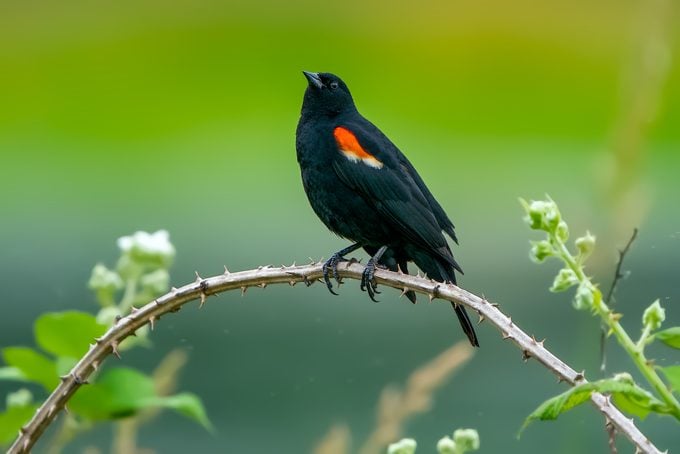
Among red-wings that migrate, females return from overwintering grounds up to a month later than males, and leave up to a month ahead of them. Northern populations generally migrate far south, some traveling as far as 800 miles. Southern and some western populations usually remain in their resident territories through winter.
When migrating, red-winged blackbirds fly only in daylight, which Sarah says may help them locate stopover habitats, stay with their flock and avoid the pitfalls of night migration. “They won’t get disoriented by artificial lights as much, and can better see dangerous structures in their path, such as buildings and turbines,” Sarah says.
They visit feeders frequently during migration when they need the extra nutrition.
Do crow sightings have meaning?
Territorial Bird Behavior
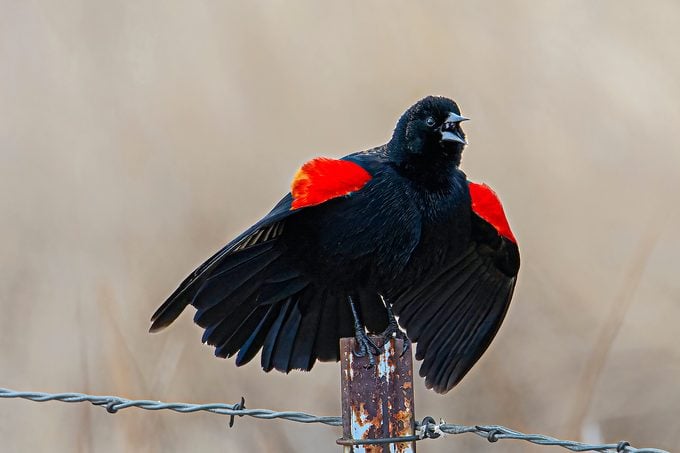
There are two reasons males flash their scarlet field marks, hunch their shoulders forward, and spread their tails: to mark their territory and warn rivals or to impress a mate. Males return from wintering ranges to claim territories in wetland marshes before the females return. The males actively defend territories, not just from other birds but from anything that dares to get too close, including people. Up to a quarter of a blackbird’s day is spent monitoring area boundaries and accosting intruders.
“I had no intention of straying from the path, but this red-winged blackbird (above) let me know with a flare that I was on his territory,” says Carl Muehlemeyer of Broomfield, Colorado.
Meet the backyard birds with a bad reputation.
What Do Red-Winged Blackbirds Eat?
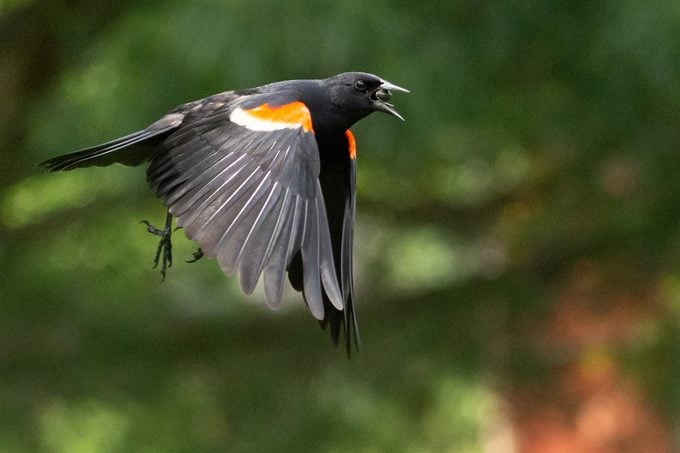
Flocks can be disconcerting when they swarm feeders. These birds prefer to eat cracked corn, black oil sunflower seed and hulled sunflower seed. You may be able to bribe them to stay in one part of the yard with an open, flat platform feeder filled with cracked corn or other cheap feed.
Next, learn how to get rid of blackbirds and grackles at feeders.

